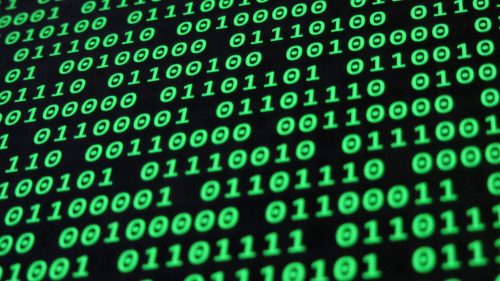A push forward for computer memory
As computer applications grow increasingly data-intensive, many researchers are investigating phase change memory (PCM) as a more effective form of information storage.] PCM is a memory technology that exploits the material properties of germanium-antimony-tellurium (GST) to provide fast, non-volatile (no electricity required) information storage. Current forms of memory only exhibit one of these characteristics—random access memory (RAM), the memory used for short-term storage, is fast but dependent upon electricity, while flash, the memory used for long-term storage, stores data without electricity, but is slow.
Despite its merits, the high manufacturing cost and short lifetime of PCM devices have limited the technology’s marketability. New developments at the Yale School of Engineering, however, may soon cause this to change. The lab of Yale professor Judy Cha, in collaboration with IBM’s Watson Research Center, recently demonstrated how a new design could extend the lifetime of a PCM device by allowing voids, a major cause of PCM failure, to self-heal. The research was published January 2018 in Wiley’s Advanced Materials.
Computers store information in binary, a number system that uses only the digits 0 and 1. In a PCM device, these digits correspond, respectively, to the crystalline and amorphous phases of the GST material. Crystalline GST has a regular atomic structure, similar to a brick wall. Amorphous GST, on the other hand, does not have a regular atomic structure, similar to a gravel road.
Computers relay binary code to a PCM device by applying a potential difference, or voltage, across the top and bottom of each memory cell. Voltage is essentially electric pressure—it pushes electrons to move in a certain direction; the resulting electron flow is called a current. As the electrons bump against the atoms of the GST, they transfer energy to the material in the form of heat. Larger voltages induce larger currents, which then generate more heat. By controlling the heating and cooling of the GST through the applied voltage, the computer can switch the GST between the crystalline and amorphous states, thus allowing it to convert information to memory.
Computers use a similar method to retrieve information from memory. To avoid inducing a phase change, computers apply a low voltage to the memory cell. Due to structural differences between the two phases, amorphous GST has greater resistance, or opposition to current flow, than crystalline GST. Thus, computers measure smaller currents through amorphous cells than through crystalline cells. This difference allows computers to distinguish between the two memory states.
After repeated data writing and retrieval, however, PCM cells break due to a phenomenon called void accumulation. When current flows through the GST, the moving electrons push individual atoms within the GST in a process called electromigration. The direction and speed of this movement differs between elements. Images obtained through transmission electron microscopy revealed, for instance, that antimony moves quickly towards regions with low potential, while tellurium moves slowly towards regions with high potential.
In PCM, this results in the net migration of the GST towards the low-potential end of the cell, leaving a void, or vacuum, in the high-potential end. “Once a void forms, the path for the current through the GST becomes disconnected,” explains Yujun Xie, the graduate student who led the experiment. “The cell becomes an open circuit—since current can no longer flow, the device can no longer be read nor switched between states.”]
The researchers found, however, that a new cell design allows voids to self-heal. In contrast to previous designs, the new design encased the memory cell in a metallic liner, which provided an alternative path for current to flow in the presence of a void. This allowed the researchers to reverse the electromigration of GST by reversing the direction of the applied voltage. Thus, alternating the direction of the applied voltage would reduce void accumulation and extend the lifetime of PCM.]
These self-healing improvements move PCM one step closer to the marketplace and bring researchers towards realizing universal memory, the ultimate goal of the computer memory industry. Universal memory is fast, non-volatile, and practical, thus allowing it to function as both short and long-term computer memory. Eliminating the need for separate forms of memory would streamline data processing in computer systems, and would reduce the inconvenience of events like computer crashes, as short-term computations would be preserved even if a program suddenly exits. With this new PCM design, universal memory and PCM data storage devices may soon be available for widespread use.

